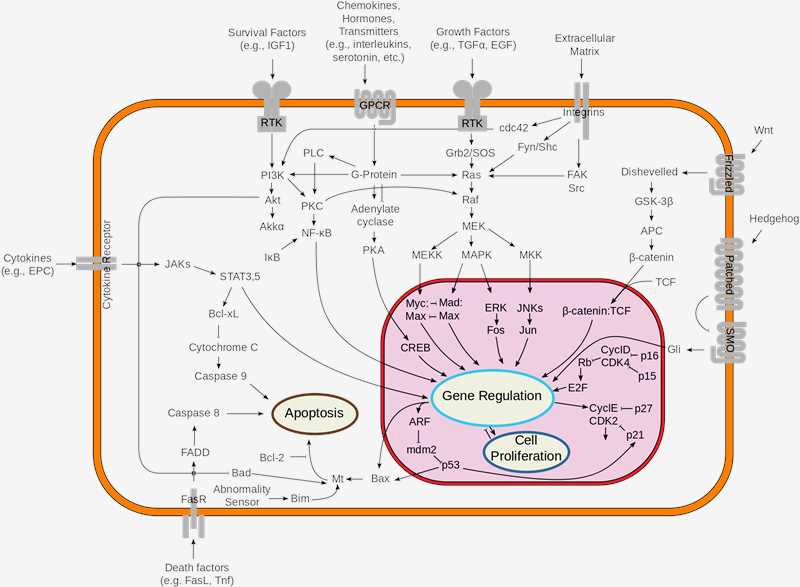Signal Transduction Pathways
The next generation of antifungal drugs is imminent because of the rapid increase in fungal infections. Signal transduction pathways have become important and valid targets for antifungal drug discovery. As a leading service provider in the field of biological research and drug discovery, Creative Biolabs has successfully developed an advanced antifungal drug discovery platform. Now, we can provide our worldwide clients a series of innovative and effective targets for signal transduction pathways, which are beneficial to the antifungal drug exploration.
Introduction of Signal Transduction Pathways
Signal transduction pathways are used to transfer messages of ligands into changes of biological activity of target cells in order to maintain homeostasis and initiate the appropriate cellular response. Aberrant or deficient signaling communication pathways may result in various diseases, so signal transduction pathways have been increasingly regarded as the potential and effective targets for drug development. In fungi, signal transduction pathways are required for coordinating the behavior of an individual organism to support its function and whole life cycle. So, the inhibition of fungal signal transduction may be effective for both direct and indirect synergistic approaches in sterilization.
 Fig.1 Simplified representation of major signal transduction pathways. Distributed under CC BY-SA 4.0, from Wiki, without modification.
Fig.1 Simplified representation of major signal transduction pathways. Distributed under CC BY-SA 4.0, from Wiki, without modification.
Major Signal Transduction Pathways
A comprehensive range of signal transduction pathways has been studied thoroughly, which are the basic mechanisms controlling cell growth, proliferation, metabolism, and many other processes.
-
MAPK/ERK Pathway
-
cAMP-dependent Pathway
-
IP3/DAG Pathway
MAPK/ERK pathway, also known as RAS-RAF-MEK-ERK pathway, is constituted of a small G protein (RAS) and three protein kinases (RAF, MEK, ERK), which can catalyze the transfer of a phosphate group from a donor molecule to an acceptor. This pathway couples intracellular responses to the binding of growth factors to cell surface receptors. Activation of this pathway regulates an array of downstream effector molecules, such as transcription factors, kinases, and translational regulators, that control the expression of target genes.
The cAMP-dependent pathway plays several physiological effects, in which cAMP acts as a key second messenger and regulates various cellular functions, including cell growth and differentiation, gene transcription and protein expression. In fungi, the cAMP-dependent pathway is necessary for living organisms and life processes, suggesting the potential for antifungal drug discovery.
Inositol triphosphate (IP3) and diacylglycerol (DAG) are important second messengers, which mediate a series of signal transduction pathways. The IP3/DAG pathway can promote an increase in calcium concentration in the cytosol and to the activation of protein kinase C, which in turn activates proteins inside the cell by phosphorylation and regulates the physiological responses of the cell.
Two-Component Signal Transduction Pathway
Two-component signal transduction pathway proteins have become attractive targets for antifungal drug discovery because they did not exist in mammalian cells. This pathway is based on the transfer of phosphoryl groups among phosphorelays and is one of the primary means by which fungi sense and respond to environmental cues. It is an ideal fungal-specific target for drug discovery. These targets 1) function as virulence factors or are essential for fungal viability; 2) are absent from the host organism, such that their inhibition cause no toxicity in the host.
Advantages of Signal Transduction Pathways Targets
- Effective for A Broad Spectrum of Fungi
- Direct Killing of Fungi
- Minimal Side Effects or Toxicities
A broad range of signal transduction associated targets have been explored aided by our advanced antifungal drug discovery platform, from which, Creative Biolabs can offer our customers high quality and reliable services to meet your basic drug discovery research and development. We’re committed to being your best partner and facilitate and maximize the success of your projects. Please contact us to learn about more information.
For Research Use Only.
